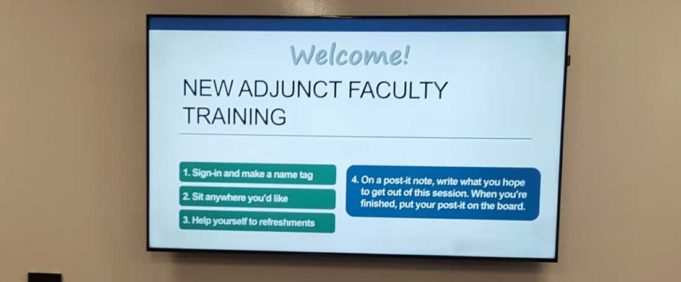August is when tens of thousands of Fort Worth’s adults enroll in courses at two- and four-year colleges, as well as folks who are simply picking up a class or two or attending night school. TCU has around 10,500 students; UTA 39,500; and TCC a hefty 57,000 spread out across five campuses. Each student body is served by a faculty whose members have all graduated high school, attained a four-year degree, then put themselves through grad school for anywhere between three and eight years. TCU has around 900 professors, offering a student-to-teacher ratio of 13:1. UTA’s ratio of 25:1, with 1,364 faculty, is well above the national average of 15:1 and ranks as “one of the worst in the U.S.,” per College Factual, the authority on college statistics. Try as I might, I could not find identical data sets for TCC, but I can confirm from its website that the college employs 1,970 faculty for a student/teacher ratio of 27:1. Tuition fees at TCU, based on 12 to 18 hours enrollment for the coming school year, are $46,860. UTA will ask for $9,208 in-state and $19,104 out-of-state, and TCC students typically pay according to their residential status with fees for 12-hours of enrollment coming out between $1,400 for local residents and up to $6,120 for “non-resident aliens,” which is the federally recognized term for fellow human beings who reside legally within the United States but do not yet have a green card.
On its face, the data clearly indicate a correlation between student/teacher ratio and dollars paid for one’s education: the lower the ratio, the higher the cost, because, logically, smaller class sizes should indicate greater attention from faculty both in the classroom and during “office hours.” As with all statistics, the full story is more layered than it may at first appear. The hidden devil lurking in this set of details is the use of adjunct faculty, those equally qualified teachers hired on a per-class basis. Typically, pay is per class, ranging between $1,800 and $3,500, and one can teach a maximum of three classes per semester, which brings the annual salary for an adjunct to between $10,800 and $21,000. These doughty, underpaid educators work from one semester to the next while loosely contracted for only the immediate 16 weeks and without sick pay, holiday pay, healthcare, or any other of the benefits afforded to full-time faculty. Adjuncts teach the same level of classes as faculty. TCU has 268 part-time faculty, which one can infer represents adjuncts, making up 29.5 percent of the total teaching staff. UTA has 402 part-timers, making up 29.5 percent of its teachers, while TCC has 1,300 adjuncts for a perhaps surprising 66 percent of total teachers. So, at our local four-year schools, you have a 3-in-10 chance of being taught by an adjunct, while at TCC, the odds are 2 in 3.
Does this affect the quality of education? The internet and social media are awash with horror stories and woe betide articles of adjunct-related doom –– long hours, even longer drives to work and back, and wages below minimum, all of which do not bode well for adjuncts’ motivation.
It would be encouraging to be able to counter the statistical shit storm with tales of adjuncts being led to full-time faculty positions, but I can’t do that. I would like to soothe the reader with tales of educators inspired by students so engaged that all the long hours of teaching, driving, working multiple jobs, and having no benefits package become worthwhile. I did not hear of any such revelatory moments. Long drives from county to county came out as a repeated pain in the collective adjunct ass, given that as an adjunct in the state of Texas, you are allowed to work only nine hours per semester, per county. This limits an adjunct to two to three lecture classes per county or one studio and one lecture class per county. If an adjunct needs to earn more than the $21,000 per annum maximum in Tarrant County, then he needs to saddle up his pony, because he will be driving outside its 902 square miles to Parker County for Weatherford College or Dallas County for the geographical myriad of DCC campuses.
One person I spoke to who has advanced to a full-time job in their area of study but outside teaching used to work “roughly seven jobs a semester to make a living wage.” They were teaching four fine arts studio classes while working as a gallery assistant, a personal assistant, and a studio assistant. As the indefatigable former adjunct pithily remarked, this does not include “the research time and effort I was putting toward my art practice, necessary in order to get a full-time teaching job.” This seems to me to be the cruelest part of the adjuncts’ lot, that there is always the dangling carrot of full-time faculty put in front of them. Others I spoke with complained of the job insecurity, not knowing from one semester to the next whether classes would be offered. Another persistent complaint is the lack of roots, since there is no permanent base from which to operate, no office to meet with students or grade papers. Petty irritations that tested the patients of many include having to wait weeks to be given keys to classrooms and parking permits. Finally, let us not forget the class prep and grading of assignments done at home, often in the wee hours between jobs. Yes, many I spoke with love teaching, and their eyes glinted in retelling stories of memorable students and classroom moments of clarity. Universally, however, the carrot did not sufficiently mitigate the sticks. This apparent grinding down of the energies and spirits of nearly 46 percent of local college teachers surely has a negative effect on the outcomes of the 100,000-plus students enrolled every year, and for this life-long learner, that is a travesty of education.













Much obliged, G.P,. for shining light on this dirty little secret of American academia. These day, “Adjunct Professor” equals “sweatshop worker.” Were you able to get the skinny on how much dough administrators and tenured professors make at these schools? If so, do tell. Also, out of curiosity, why did you leave out Texas Wesleyan?
Thanks for your comment and questions Thomas. Leaving out Wesleyan is an accidental omission on my part.
Entry level profs at 2-year schools typically earn upwards of $52k. 4-year schools pay a little more, typically. Salary typically increases year on year.
Upon being granted tenure profs get a salary bump in the mid-high single digits – $5,000+ per my research.
My view is that full time profs earn a fair wage for the expertise they bring and time and effort required.
Administrator salaries vary greatly from school to school, and department to department therein.